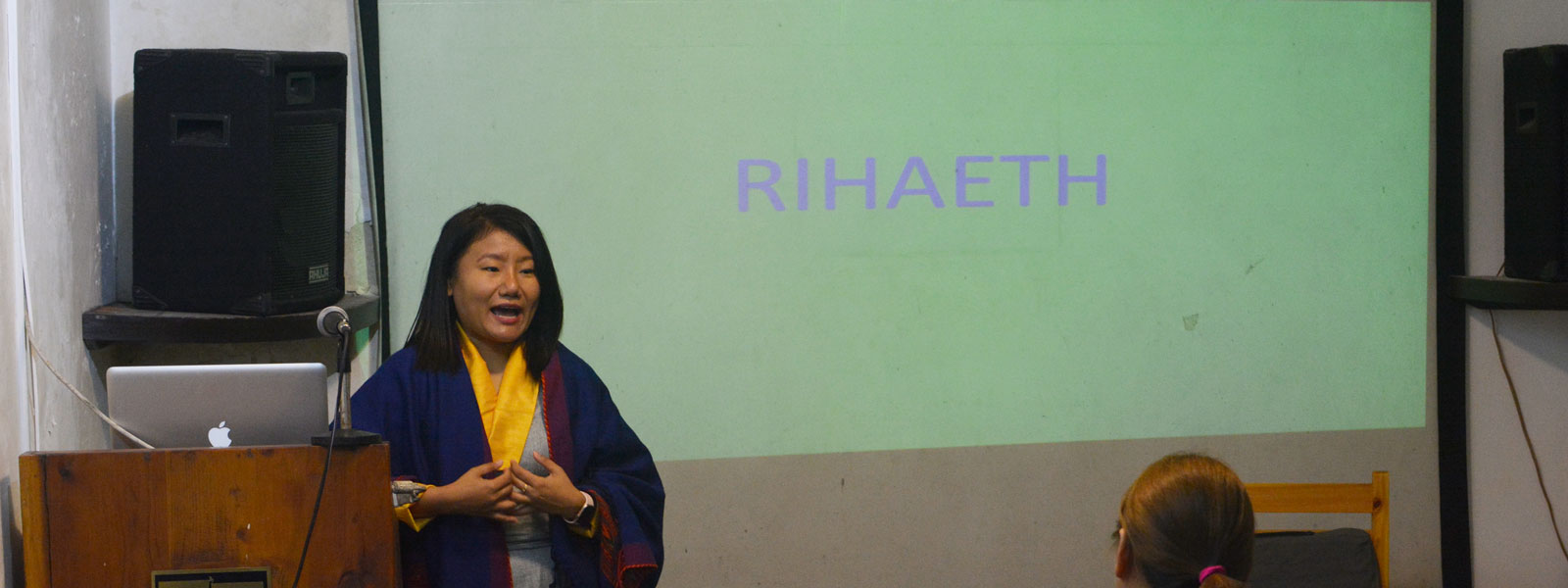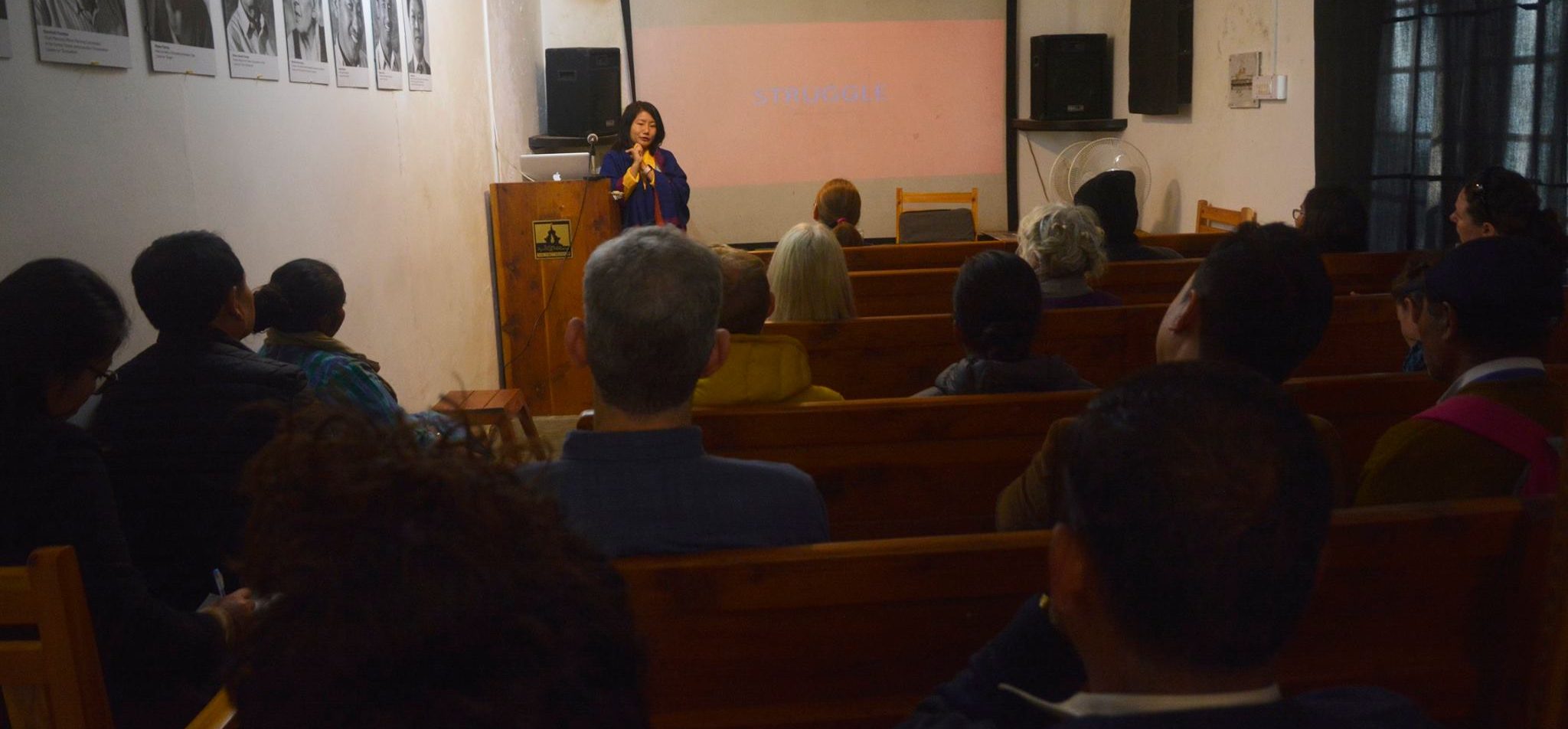The Tibet Museum Tibet Awareness Talk series: ‘TIBET through the eyes of a Tibetan born in exile’ by Thinlay Chukki

McLeod Ganj, Dharamsala: For the Tibet Museum bi-monthly talk series, the second talk series of this month was delivered by Ms Thinlay Chukki on ‘TIBET through the eyes of a Tibetan born in exile’ on Wednesday, November 21, 2018. About our speaker, she completed her Bachelor Degree in Law from SDM Law College, Mangalore University and was awarded with three gold medals and several other awards for topping both the college and the University in B.A.L and L.L.B Degree. After the completion of her Master’s Degree in Law specializing in Business Laws from National Law School of India University, Bangalore, she was recruited by TATA Motors where she worked as an in-house counsel for almost 5 years. Thereafter she earned her Masters’ degree in Law from Harvard Law School, the United States of America in 2018. Apart from her academic achievement and corporate work, she has also done a lot of pro-bono work in providing legal advice to monasteries, Tibetan organizations and Tibetans in general.
The speaker opened up the topic by narrating her recent event of basketball game and related it with the concept of not giving up. Tibet, that doesn’t have much of international support from major international organizations like United Nations, has all the odds stacked against it and its people and yet Tibetans are not giving up, they are marching on keeping the struggle alive.
The word that describes her feeling towards Tibet is ‘Hiraeth’ meaning longing for home, home sickness and grieving for the loss of home that you never been to.
Her parents were her source of knowledge on Tibet. She heard and lived through the struggle and history of Tibet through their eyes. She then defined what Tibet is for her via four words: Hope, Struggle, Experiment and Dream.
Hope, Tibet is about Hope. She unwrapped two different storylines stating the difference in the generation and the technology development along with time. Sticking to this she stated an example, when her father first visited Lhasa he saw a huge animal running at the front and a smaller one chasing behind it. His first thought was that a child is chasing its mother. Later staying for a longer period of time in Lhasa, he discovered that the bigger animal was a Truck and the smaller one was a Jeep. The difference in both the era depicts two different scenario where, one is so much lacked behind in the technology and the other one where we keep on building buildings and knotting the hope for materializing ‘Tibet for Tibetans’.
Struggle, Tibet is also about struggle. Ms. Chukki explained Tibetan struggle at different levels.
First, Tibetan struggle as in global level is about keeping Tibet on the radar. There have been multiple resolutions on Tibet by UN, EU, world parliamentarians and the like. The struggle here is creating support for Tibet from the International Community. Like the recently concluded Universal Periodic Review (UPR) of China conducted by Human rights council, where 12 Member States raised concerns about Tibet and the Chinese delegation had the audacity to say, “Human Rights will be accepted with Chinese characteristics.”
Second, the struggle is within Tibet too, that is why self-immolations are going on inside Tibet. There have been more than 153 self-immolations that have taken place in Tibet with the age varied from 16-63 years.
Thirdly, speaker also expressed the Tibetan struggle from the perspective of Tibetans born in exile facing the duality of life when being different from the people of the host country, the struggle of not being able to defend and compromise because of being living as a guest on other’s land.
Precisely the struggle is faced at international level, domestic level within in Tibet, struggle while living in the host country and at a personal level. The struggle is faced at various levels from personal to international level.
Experiment, Tibet also is an experiment. In 1945 when UN was established, people sternly sought and fought for Human Rights. People said they couldn’t afford another world war and we have to respect the human rights of other person. Tibet in the 60 years is an experiment for the whole world to really understand and espouse the principles on which the international institutions are built upon.
It is also an experiment for the Tibetans to know what their power of resilience against the repressive policies, to know how strong they can survive.
And it is also an experiment for the Chinese government because what you see happening in Xinjiang, their repressive policies were first experimented in Tibet and unleashed to other regions. The Chinese Government experiments how repressive they can go and how long they can implement it.
Dream, Tibet is also a dream. The importance of holding on to dreams. She narrated a related life experience that came true when she held on to it.
She eventually returned back to where she had started, disclosing the result of that recent basketball match she participated. The speaker then concluded her talk by saying, “If we won’t dream, if we don’t keep the dream alive, then the coming generation will never know they have a home to go back to. We can never give up even though we know that the path will be tough. Even though all odds are stacked against us, we cannot give up, because this is not a struggle for personal gain, it is a struggle for the principles on which the human race and the humanity is built upon. The world may have forgotten that the Tibetans are also human beings but we must keep going, showing them that we are alive and that we have not given up and never will.”
~Reported by Kunga Choedon

